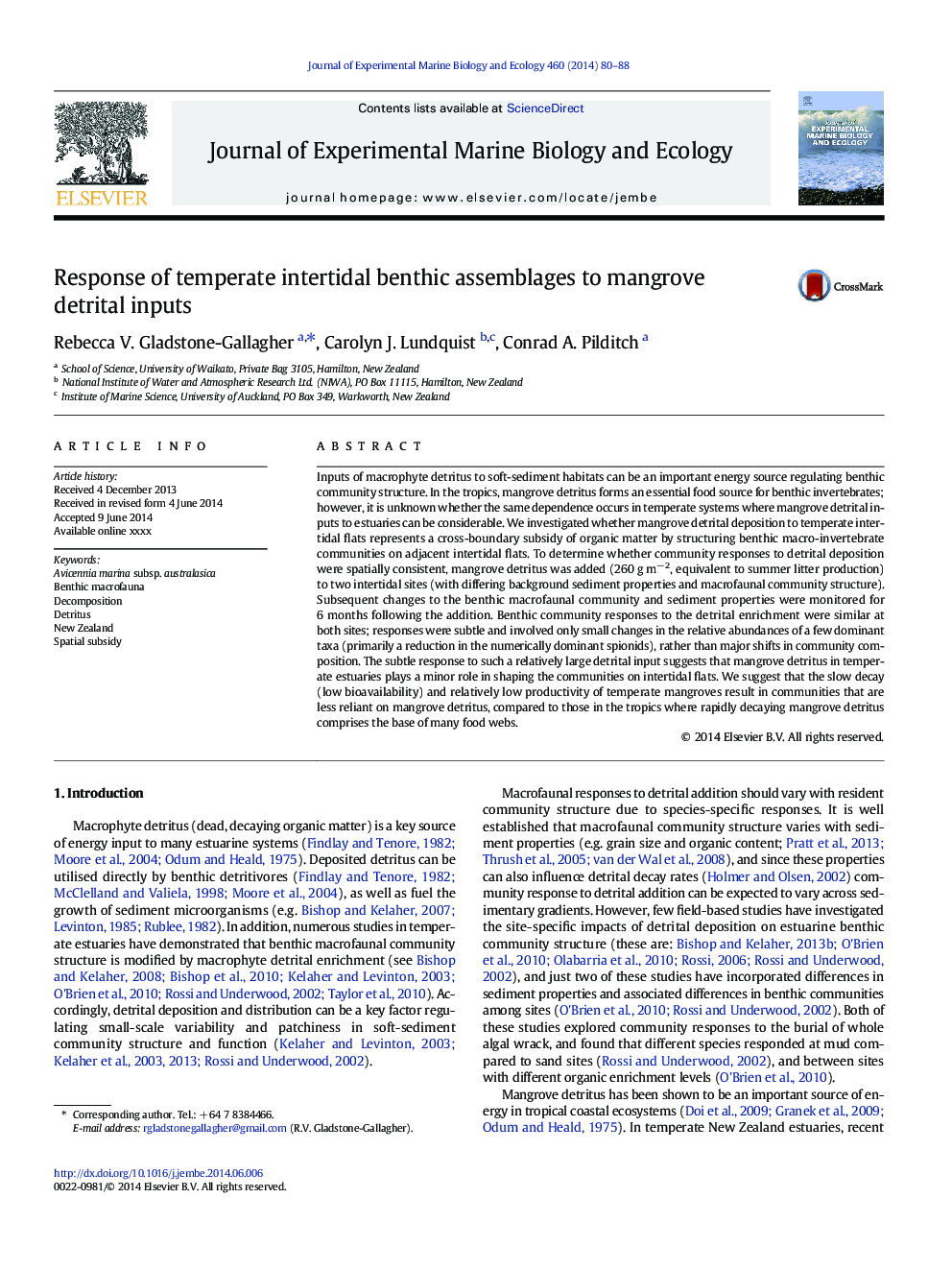| Article ID | Journal | Published Year | Pages | File Type |
|---|---|---|---|---|
| 6304063 | Journal of Experimental Marine Biology and Ecology | 2014 | 9 Pages |
Abstract
Inputs of macrophyte detritus to soft-sediment habitats can be an important energy source regulating benthic community structure. In the tropics, mangrove detritus forms an essential food source for benthic invertebrates; however, it is unknown whether the same dependence occurs in temperate systems where mangrove detrital inputs to estuaries can be considerable. We investigated whether mangrove detrital deposition to temperate intertidal flats represents a cross-boundary subsidy of organic matter by structuring benthic macro-invertebrate communities on adjacent intertidal flats. To determine whether community responses to detrital deposition were spatially consistent, mangrove detritus was added (260 g mâ 2, equivalent to summer litter production) to two intertidal sites (with differing background sediment properties and macrofaunal community structure). Subsequent changes to the benthic macrofaunal community and sediment properties were monitored for 6 months following the addition. Benthic community responses to the detrital enrichment were similar at both sites; responses were subtle and involved only small changes in the relative abundances of a few dominant taxa (primarily a reduction in the numerically dominant spionids), rather than major shifts in community composition. The subtle response to such a relatively large detrital input suggests that mangrove detritus in temperate estuaries plays a minor role in shaping the communities on intertidal flats. We suggest that the slow decay (low bioavailability) and relatively low productivity of temperate mangroves result in communities that are less reliant on mangrove detritus, compared to those in the tropics where rapidly decaying mangrove detritus comprises the base of many food webs.
Related Topics
Life Sciences
Agricultural and Biological Sciences
Aquatic Science
Authors
Rebecca V. Gladstone-Gallagher, Carolyn J. Lundquist, Conrad A. Pilditch,
